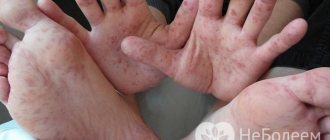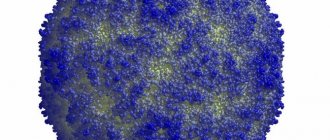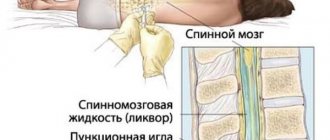Zika virus is a mosquito-borne flavivirus first identified in monkeys in Uganda in 1947. Later, in 1952, the virus was identified in humans in Uganda and the United Republic of Tanzania. Outbreaks of Zika virus disease have been reported in Africa, the Americas, Asia and the Pacific. In the 1960-1980s. In Africa and Asia, rare isolated cases of human infection have been identified, which are usually accompanied by mild illness. The first outbreak of Zika virus disease was reported on the island of Yap (Federated States of Micronesia) in 2007. This was followed by a large outbreak of Zika virus infection in French Polynesia in 2013 and in other countries and territories in the Pacific region. In March 2015, Brazil reported a large outbreak of the disease, accompanied by a rash, which was soon identified as Zika virus infection, and in July 2015 it was linked to Guillain-Barré syndrome. In October 2015, Brazil reported an association between Zika virus infection and microcephaly. Soon, disease outbreaks and transmission began to be reported in America, Africa and other regions of the world. To date, a total of 86 countries and territories have reported evidence of mosquito-borne Zika virus infection. More information about the Zika virus - in English
First information
Zika virus - what is it? How to protect yourself and your loved ones from “acquaintance” with the overseas fever, which was first discussed in 1947? The virus was found in the blood of macaques, inhabitants of the Zika forest. The Zika Forest is located in Uganda (Africa), covers an area of 25 hectares and is characterized by a wide variety of different insects, including about 40 species of mosquitoes.
Five years later, Zika fever, similar to other types of fevers transmitted by infected bloodsuckers, was discovered in residents of Tanzania and Uganda.
Literature
- Lessler J., Chaisson LH, Kucirka LM, Bi Q., Grantz K., Salje H. et al. (2016). Assessing the global threat from Zika virus. Science. 353 , aaf8160;
- Wikipedia : "Zika (forest)";
- Wikipedia : "Zika fever";
- Disease caused by the Zika virus. (2016). WHO fact sheet;
- Deckard DT, Chung WM, Brooks JT, Smith JC, Woldai S, Hennessey M et al. (2016). Male-to-male sexual transmission of Zika virus — Texas, January 2021. MMWR Morb. Mortal. Wkly Rep. 65, 372–374;
- Venturi G., Zammarchi L., Fortuna C., Remoli M.E., Benedetti E., Fiorentini C. et al. (2016). An autochthonous case of Zika due to possible sexual transmission, Florence, Italy, 2014. Euro Surveill. 21 , doi: 10.2807/1560-7917.ES.2016.21.8.30148;
- Foy BD, Kobylinski KC, Chilson Foy JL, Blitvich BJ, Travassos da Rosa A, Haddow AD et al. (2011). Probable non-vector-borne transmission of Zika virus, Colorado, USA. Emerg. Infect. Dis. 17, 880–882;
- Boadle A. (2016). Brazil reports Zika infection from blood transfusions. Reuters;
- Wikipedia : "Virusemia";
- Hamel R., Dejarnac O., Wichit S., Ekchariyawat P., Neyret A., Luplertlop N. et al. (2015). Biology of Zika virus infection in human skin cells. J. Virol. 89, 8880–8896;
- Autophagy, protophagy and others;
- Victora C. G., Schuler-Faccini L., Matijasevich A., Ribeiro E., Pessoa A., Barros F. C. (2016). Microcephaly in Brazil: how to interpret reported numbers? Lancet. 387, 621–624;
- Cugola FR, Fernandes IR, Russo FB, Freitas BC, Dias JL, Guimarães KP et al. (2016). The Brazilian Zika virus strain causes birth defects in experimental models. Nature. 534, 267–271;
- Nowakowski T. J., Pollen A. A., Di Lullo E., Sandoval-Espinosa C., Bershteyn M., Kriegstein A. R. (2016). Expression analysis highlights AXL as a candidate Zika virus entry receptor in neural stem cells. Cell Stem Cell. 18, 591–596;
- Miner JJ, Cao B, Govero J, Smith AM, Fernandez E, Cabrera OH et al. (2016). Zika virus infection during pregnancy in mice causes placental damage and fetal demise. Cell. 165, 1081–1091;
- Li C., Xu D., Ye Q., Hong S., Jiang Y., Liu X. et al. (2016). Zika virus disrupts neural progenitor development and leads to microcephaly in mice. Cell Stem Cell. 19, 120–126;
- Ye Q., Liu Z. Y., Han J. F., Jiang T., Li X. F., Qin C. F. (2016). Genomic characterization and phylogenetic analysis of Zika virus circulating in the Americas. Infect. Genet. Evol. 43, 43–49;
- Kim JM, Yun SI, Song BH, Hahn YS, Lee CH, Oh HW, Lee YM (2008). A single N-linked glycosylation site in the Japanese encephalitis virus prM protein is critical for cell type-specific prM protein biogenesis, virus particle release, and pathogenicity in mice. J. Virol. 82, 7846–7862;
- Li J., Bhuvanakantham R., Howe J., Ng M. L. (2006). The glycosylation site in the envelope protein of West Nile virus (Sarafend) plays an important role in replication and maturation processes. J.Gen. Virol. 87, 613–622;
- Sirohi D., Chen Z., Sun L., Klose T., Pierson T. C., Rossmann M. G., Kuhn R. J. (2016). The 3.8 Å resolution cryo-EM structure of Zika virus. Science. 352, 467–470;
- Patterson R. (1989). Dr. William Gorgas and his war with the mosquito. CMAJ. 141, 596–597, 599;
- Zmurko J., Marques R.E., Schols D., Verbeken E., Kaptein S.J., Neyts J. (2016). The viral polymerase inhibitor 7-deaza-2'-C-methyladenosine is a potent inhibitor of in vitro Zika virus replication and delays disease progression in a robust mouse infection model. PLoS Negl. Trop. Dis. 10 , e0004695;
- 454 sequencing (high-throughput DNA pyrosequencing);
- Cohen J. (2016). Zika vaccine has a good shot. Science. 353, 529–530;
- Abbink P., Larocca RA, De La Barrera RA, Bricault CA, Moseley ET, Boyd M. et al. (2016). Protective efficacy of multiple vaccine platforms against Zika virus challenge in rhesus monkeys. Science. pii: aah6157;
- Larocca RA, Abbink P, Peron JP, Zanotto PM, Iampietro MJ, Badamchi-Zadeh A. et al. (2016). Vaccine protection against Zika virus from Brazil. Nature. 536, 474–478..
Distribution area
What is the Zika virus and why is it dangerous? The dangerous infection began its global march across the planet in 2007-2013, exposing the population of French Polynesia and the state in Oceania - Micronesia to infection. Then the infection made itself known to the residents of New Caledonia and the Cook Islands, eventually moving to the territory of Colombia and Guatemala. In the fall of 2015, Zika fever spread to Brazil, where the epidemic rapidly gained momentum. Probably, the carriers of the infection were athletes from infected regions who came to the World Canoeing Championships.
The virus received its name in honor of the area where the first carrier of the infection was discovered - the Zika forest monkey.
Further, the geography of the little-studied fever expanded to another 23 countries: Mexico, the USA, Puerto Rico; in 2021, it confidently stepped into Europe, in particular, into France, Denmark, Germany, Sweden, and Switzerland.
Characteristics, signs and symptoms of yellow fever
Yellow fever is caused by the Viscerophilus tropicus virus. Most cases of infection occur in Africa and South America. The disease got its name because patients' skin often turns yellow. The symptom is explained by liver damage. The carriers of yellow fever are mosquitoes.
Main signs of the disease:
- rapid increase in temperature to 39-40⁰С;
- severe headache;
- severe weakness;
- repeated vomiting;
- lacrimation;
- redness and swelling of the face, neck, upper limbs.
Gradually, bleeding (both nasal and internal), hemorrhages on the skin, and kidney problems are added to the symptoms of yellow fever.
Variants of the clinical picture of yellow fever
There are 2 forms of the disease:
- jungle yellow fever (the pathogen is transmitted from infected wild monkeys);
- city fever (the virus is transmitted from humans).
The clinical picture in both cases is similar, but in the first case the disease develops more aggressively, and the second type, although it passes more easily, often causes epidemics.
Route of infection: through sexual contact
How is the Zika virus transmitted? The main carriers of this dangerous disease are tropical bloodsucking insects. There have also been cases of its spread through sexual contact. It was in this way that in 2009, an entomologist who returned from a Senegalese expedition to his home state of Colorado infected his wife.
In 2013, during the French-Polynesian epidemic, the virus was detected in the urine and semen of one of the residents of Tahiti, who suffered two acute stages of fever within 2 months. By the way, the virus was not detected in the patient’s blood.
In 2015-2016 In the United States, during the outbreak of the epidemic, 6 cases of sexual transmission of infection were identified. According to the recommendations of medical specialists, to prevent the spread of a tropical infection, males are required to use condoms or refuse sexual contact:
- in the absence of characteristic symptoms - within 8 weeks after staying in contaminated areas;
- after suffering from the disease - for six months.
Forms of Zika fever
The infection occurs in several forms depending on the severity of the process:
- asymptomatic;
- light;
- moderate severity;
- heavy.
More than 2/3 of all cases of Zika fever are either asymptomatic or in an erased form.
Severe forms of infection caused by the Zika virus are extremely rare, and deaths from the disease are rare. Mortality from the disease is not reliably related to previous infection with the Zika virus, and theoretically the disease is considered non-fatal.
The Zika virus was first isolated from the blood of rhesus monkeys in the tropical forests of Uganda in 1947, hence the name (“Zika” means “thicket” in the local indigenous language).
Infection during pregnancy
Ways of contracting the Zika virus include transmission from mother to baby during pregnancy. In 2015, elements of the virus were found in the amniotic fluid of 2 embryos, which only confirmed its pathogenetic influence on the entire process of intrauterine development of the fetus.
You should know! The Zika virus is spreading at lightning speed, outpacing all scientific research on it.
According to medical experts, the most dangerous period for infection is the first trimester of pregnancy, during which all organs and systems of the unborn child are formed.
Transmission of infection
Zika virus is transmitted primarily by the bite of infected Aedes mosquitoes, mainly Aedes aegypti, in tropical and subtropical areas. Aedes mosquitoes typically bite during the daytime and are at their peak activity in the early morning or late afternoon/evening hours. The same mosquito carries dengue, chikungunya and yellow fever.
The Zika virus is also transmitted from mother to fetus during pregnancy, through sexual contact, transfusion of blood and blood products, and organ transplantation.
Consequences of the Zika virus for a child
Infecting women preparing to experience the joys of motherhood, the Zika virus provokes the birth of offspring with microcephaly. Microcephaly is a congenital pathology when, with absolutely normal body proportions, the mass of the brain and skull is much less than normal.
According to doctors, it is impossible to detect defects in a developing fetus, and many mothers learn about the presence of the Zika virus in their children after birth, when it turns out that the baby’s head circumference does not exceed 33 cm, when the norm is above 36.2 cm.
The consequences of exposure to the Zika virus for a child are disastrous and negatively affect his future life: retardation in height, weight, intellectual development, severe hearing and vision impairment, dwarfism
The pathological connection “Zika virus - mother - child” was recorded in 2013-2015. during epidemics in Brazil and French Polynesia, where microcephaly accounted for 1% of the total number of newborns.
Causes of pathology
In the vast majority of cases, yellow fever occurs after a person is bitten by a female infected mosquito (sometimes other blood-sucking insects). A surge in incidence is observed during the rainy season, when mosquitoes breed especially actively.
It is much less likely to become infected through contact, for example, when a wound comes into contact with a poorly treated medical instrument. There are rare cases of infection in a laboratory, when employees carry out any manipulations with the causative agent of the disease and act insufficiently carefully.
Characteristic symptoms of Zika virus infection
The incubation period (the time period from the moment of infection to the appearance of the first symptoms of the disease) is several days.
You can suspect the presence of the Zika virus in the body based on the following symptoms:
- elevated temperature;
- skin rashes (first in the facial area, then throughout the body), itching;
- conjunctivitis;
- joint, muscle, headaches;
- feverish condition;
- general malaise.
The disease does not become chronic and is characterized by an acute course for 1 week.
You should know. The Zika virus in a child can affect the genetic nature of the body and provoke rare and dangerous complications of an autoimmune and neurological nature. This fact was noted during periods of epidemics, during which the number of people affected by the rare Guillain-Barré syndrome, leading to incurable paralysis and death, increased.
Today, medical scientists are working to study the pathological effect of the Zika virus on the fetus during intrauterine development and the possible consequences after the birth of the child.
Treatment
There is currently no treatment for Zika virus infection or related illnesses. Symptoms of Zika virus infection are usually mild. People with symptoms such as fever, rash or joint pain should get plenty of rest, drink enough fluids and take regular pain relievers and fever-reducers. If symptoms worsen, seek medical help and advice. Pregnant women who live in areas with Zika virus transmission or who develop symptoms of Zika virus infection should contact their doctor for laboratory testing and other clinical care.
Diagnostics and treatment measures
The presence of the Zika virus in the body can be suspected if an outbreak of fever is confirmed, or if the patient arrived from a region affected by this infection. The diagnosis can be confirmed in the laboratory by examining venous blood using the polymerase chain reaction method. Self-identifying Zika fever, whose symptoms are mild and fleeting, is almost impossible.
Treatment of Zika fever is only symptomatic, so it is impossible to prevent the development of such a pathology. Patients with the Zika virus are advised to rest, stay in bed, drink plenty of fluids, and use medications to reduce aches, normalize temperature, and relieve fever.
The patient does not pose any danger to others and after a medical examination can be successfully treated at home. Often, after following general recommendations, Zika fever gradually reduces its manifestation and disappears completely by 7-8 days from the onset of the disease.
Biotechnology company Oxitec has invented genetically modified blood-sucking Aedes aeqypti by inserting two genes into the insects' DNA. One of them causes the larvae to glow under the influence of ultraviolet light, which in the future will make it possible to recognize winged vectors of infection. Another gene has a detrimental effect on all mosquito offspring. The developers believe that such an invention will help reduce the transmission of the virus in infected areas by more than 80%.
If your condition worsens or new symptoms appear, you should immediately seek professional medical help.
Prognosis and prevention of Dengue fever
For those with the classic form, the prognosis is favorable. In severe cases of dengue fever, severe consequences often develop, resulting in death in approximately half of the cases.
Dengue fever prevention measures include:
- use of personal protective equipment (closed clothing, mosquito nets, repellents) when visiting countries that are at risk;
- mandatory monitoring of well-being for the first time after returning from travel (pay special attention to temperature);
- reducing places suitable for insect breeding (first of all, you should get rid of standing water or tightly close containers with it).
Vaccine
A vaccine for dengue fever exists, but it is recommended for those who have already been infected.
Preventive actions
The Zika virus, which begins to show symptoms several days after infection, is spread through mosquito bites. Therefore, the main preventive measure is to avoid visiting regions where there is a high risk of infection with this disease. One method of protection against mosquitoes is the use of protective aerosols or ointments.
The population living or staying in the infected area is recommended to:
- wear light, closed clothes,
- install mosquito nets in the premises;
- use ultrasonic devices to repel mosquitoes;
- do not visit places where insects are located, do not swim in bodies of water.
In regions where there is an outbreak of the Zika virus, key activities aimed at combating winged vectors of infection include:
- destruction of places where blood-sucking insects gather;
- reducing the likelihood of insect contact with humans.
Repellent and pharmacy
Our country also has a lot of its own “homegrown” pathogens transmitted by insects. So let's talk about repellents. More often, consumers buy them at a supermarket or hardware store. Why not at the pharmacy? After all, repellents are essentially preventive agents that protect our body from pathogenic factors. Based on this, they should be present in the pharmacy assortment, especially since they are sprayed on the skin. But can they be present there from a legal point of view?
Clause 7 of Article 55 of the Law “On the Circulation of Medicines” (No. 61-FZ dated April 12, 2010) lists the groups of goods that pharmacy organizations have the right to sell. Repellents are not specifically mentioned on this list, but “medical products” are included.
In the All-Russian Classification of Products (OKP), repellents appear in two sections at once. Firstly, in section 23 0000, which lists groups of household chemical products. Here, repellents under code 23 8620 coexist with insecticides (“products for combating household insects”) and zoocides (“products for combating domestic rodents”).
Repellents - under a different code, OKP 93 9260 - are also included in section 93 0000, called “Medicines, chemical-pharmaceutical products and medical products.” Here they are in similar proximity to disinfectants (93 9210), disinfestation (93 9220) and deratization (93 9230) agents.
Thus, the possibility of selling a particular repellent in a pharmacy or pharmacy depends on which of these codes it is registered with Rospotrebnadzor. If the code is 93 9260, then the repellent can be classified as medical products (medical devices) and be present in the pharmacy assortment.
WHO response to Zika virus
The rapid spread of a dangerous virus is causing concern throughout the world. The public was especially shocked by hundreds of children born in Brazil with a diagnosis of microcephaly.
Today, active work is underway to create a vaccine that can defeat the Zika virus. Experiments are carried out on monkeys and produce successful results.
World Health Organization experts are working hard to combat the Zika virus, focusing on:
- stimulating scientific work on the study of the virus, its impact on the fetus developing in the womb, and the creation of effective drugs to treat the disease;
- strict compliance with the epidemic regime in infected regions;
- formation of a high-quality laboratory base for virus research.
Zika fever is currently poorly understood; the areas of its influence on the human body have not been sufficiently analyzed, so practicing doctors and scientists will have to work hard to learn everything about the Zika virus and reveal its secrets to preserve the health of humanity.
Key Facts
Information you need to know about the virus:
- The pathogen is transmitted by mosquitoes from the Aedes family. They bite mainly during the day.
- Often the disease is asymptomatic. Even if signs appear, it is difficult to detect Zika because... the clinical picture is similar to other pathological conditions.
- Zika virus poses a serious threat during gestation. It causes miscarriages and premature births, defects that are collectively called “congenital syndrome caused by the Zika virus.”
- There is no treatment that can completely cure, there are no preventive vaccines.
Below, each item on the list will be described in more detail.
Forecast and prevention of yellow fever
The prognosis for mild cases of the disease is favorable, but in severe cases it worsens. The mortality rate is about 10 - 15%, in case of complications it can reach up to 60%.
Prevention of yellow fever can be either specific or nonspecific. Unlike many other types of hemorrhagic fever (eg HFRS or Dengue), there is a vaccine for yellow fever that is widely used in endemic areas.
Other protective measures are the destruction of vectors, the use of protective equipment, control of cargo transportation and population migration (to prevent the spread of the disease), and disinfestation of water bodies.











